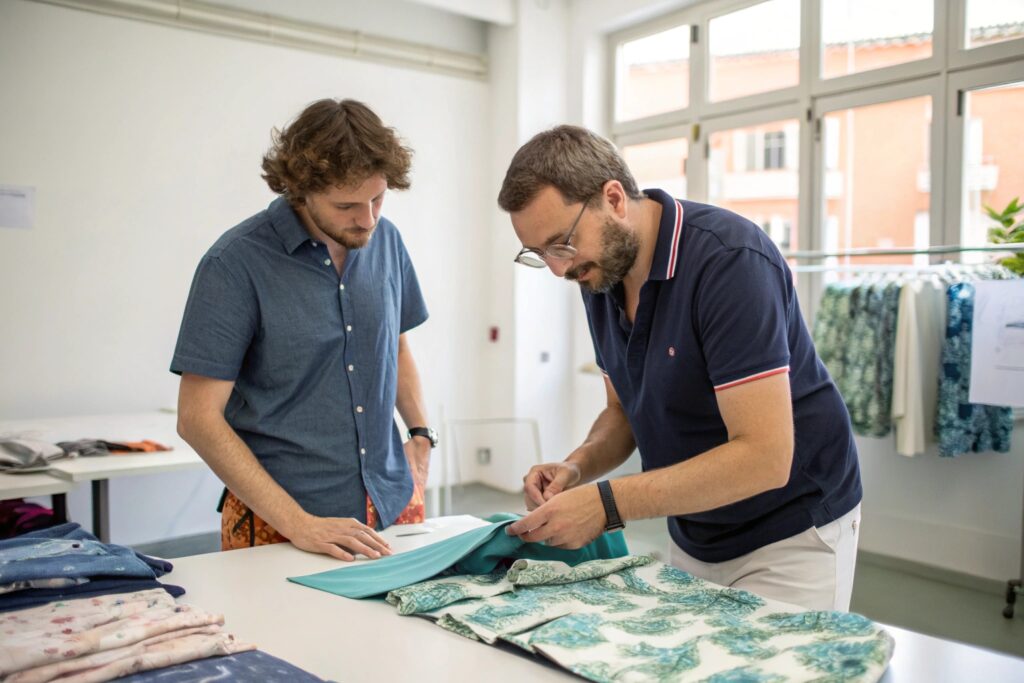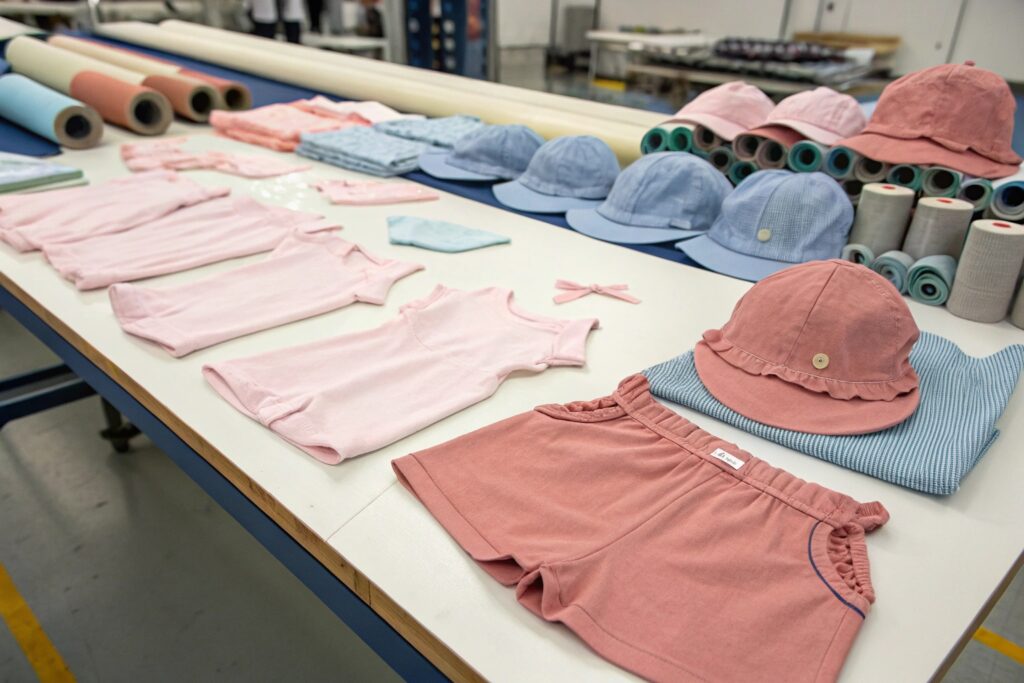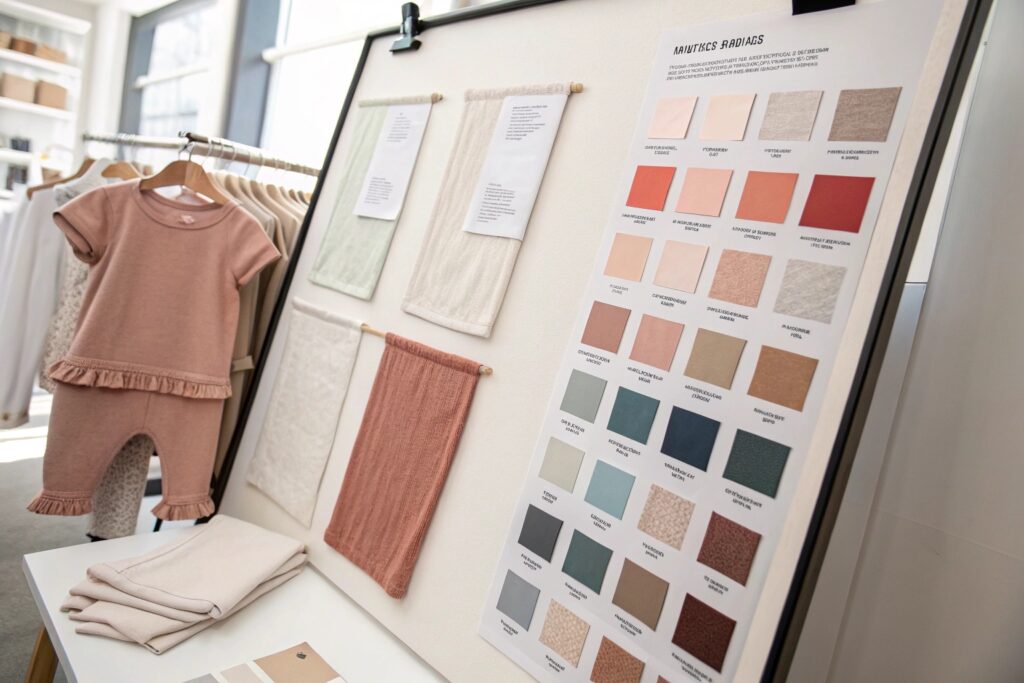Launching a capsule collection is exciting—but high MOQs can kill your momentum before you even start. The solution? Smart manufacturing strategy.
Capsule collections can be manufactured at low MOQ by using streamlined design, shared materials, strategic planning, and working with suppliers who specialize in small-batch flexibility.
If you’re an emerging brand or small fashion label looking to scale without overcommitting, this guide will show you how to get it done—successfully, affordably, and fast.
Best Low MOQ Strategies for Emerging Fashion Brands?
Most fashion startups struggle with MOQs because they plan like big brands. The trick is to plan like a capsule.
To manufacture capsules at low MOQ, simplify silhouettes, share fabrics across styles, and limit colorways while maximizing styling variety.

How does simplifying product variety allow for lower MOQ and better quality control?
When you reduce variety, you increase focus. Instead of 12 styles with different prints and materials, you design 4 silhouettes in one cohesive theme. This allows you to order more of each item—without increasing total units.
At Fumao Clothing, we guide clients to develop “core style frameworks.” A basic tee pattern becomes a dress, a romper, or a PJ top with just slight adjustments. That keeps sampling, grading, and stitching more consistent—and cheaper.
This method helps you meet minimums while ensuring every piece looks and feels premium.
How does smart color and print planning reduce production waste and cost?
Stick to one palette. For example, use two main colors plus one print across your entire drop. This creates visual cohesion and allows fabric bulk purchasing. Your dye cost goes down. Your waste goes down. Your capsule looks more curated.
We often help brands design graphics that work on multiple styles: a single print file can go on bodysuits, tees, and blankets. That’s efficiency—and style—in one move.
How to Find Reliable Suppliers for Small Batch Production?
Not all factories want small orders. But some are built for it—like ours.
To find reliable small-batch suppliers, look for those who specialize in flexible MOQ models, clear communication, and dedicated sampling support.

What qualities should you prioritize when sourcing a low-MOQ manufacturer?
Look for three things:
- Production Flexibility: Do they offer MOQs under 500 pieces total, not per SKU?
- Sampling Willingness: Will they do multiple rounds of small changes without pushing back?
- Communication: Do they answer quickly, clearly, and offer technical feedback?
At Fumao Clothing, we built our system around startups. We don’t treat your 300-piece order like an inconvenience. We offer fast sampling, branded packaging—even at small quantities.
We also help with forecasting. If your capsule sells out, we can reorder within weeks—keeping you in stock without bloating your budget.
How can emerging brands avoid common pitfalls when dealing with overseas suppliers?
Don’t chase the cheapest price. Cheap suppliers often cut corners on stitching, fabric quality, and timelines. Instead, look for transparency. Ask for:
- Sample photos before production
- Clear production calendars
- References from other startup clients
We offer DDP (Delivered Duty Paid) shipping, so you get an all-in-one cost. That eliminates customs surprises—another major headache for new brands.
Tips to Optimize Costs in Limited Capsule Manufacturing?
The goal isn’t just to produce small—it’s to produce smart. Every decision counts.
To keep costs low in capsule production, reuse base materials, optimize print methods, and keep packaging minimal but branded.

How does reusing components across SKUs lower both unit and sampling costs?
Use the same zipper across three styles. One type of ribbing for all cuffs. The same fabric for tops and bottoms. These moves reduce sourcing costs and allow fabric suppliers to hit lower MOQ thresholds.
Here’s an example from a client we work with at Fumao Clothing:
| SKU | Fabric | Reused Element |
|---|---|---|
| Bodysuit | Organic rib cotton | Same base as leggings |
| Romper | Brushed fleece | Used same snap tape as hoodie |
| Hoodie | Fleece | Shared ribbing and label |
This saved them nearly $700 in development costs and brought their per-piece cost down by 12%.
What other manufacturing choices reduce cost without lowering quality?
Print techniques matter. Digital print works well for capsules—it’s low MOQ, high precision. Screenprint is great but best for bulk.
We also recommend skipping lined items unless necessary. Fewer layers = lower labor. Or, switch to flatlock seams if you’re doing athleisure—it’s comfortable and efficient.
Use minimalist packaging—like recyclable polybags with a custom sticker. It still feels branded, without the cost of boxes or hangtags.
MOQ-Friendly Fabrics and Trims for Capsule Collections?
Some materials make low-MOQ impossible. Others unlock flexibility. Choose wisely.
Fabrics like cotton jersey, rib knits, and interlock blends—along with common trims like plastic snaps and elastic waistbands—are ideal for low-MOQ capsule manufacturing.

What fabric types help reduce MOQ barriers while still meeting quality expectations?
Here are our top picks at Fumao Clothing:
| Fabric Type | Best For | Why It Works |
|---|---|---|
| Cotton Jersey | Bodysuits, Tees | Easy to source, cost-efficient, breathable |
| Rib Knit | Pants, Cuffs | Works across sizes and seasons |
| Interlock | Rompers, Babywear | Soft feel, good stretch, durable |
| French Terry | Lounge sets | Heavier but still MOQ-friendly |
| Muslin Cotton | Swaddles, Blankets | Pre-dyed stock often available |
Sticking to these fabrics lets us help you combine styles for larger fabric totals—keeping MOQ low per style.
What trims and finishes should brands use to maintain consistency and control costs?
Choose trims that are versatile and easily sourced in small amounts:
- Snap buttons (preferably plastic): reliable and low-cost
- Elastic waistbands: easy to adjust for size, cost-effective
- Screenprinted labels: cheaper than sewn-in tags
- Zippers: only use if required; reuse across pieces
We help brands select trims in neutral tones to match multiple capsules. This way, leftover materials from one drop can be reused in the next. That’s long-term savings.
Conclusion
With the right planning and partner, you can manufacture capsule collections at low MOQ—without sacrificing style, quality, or speed.










